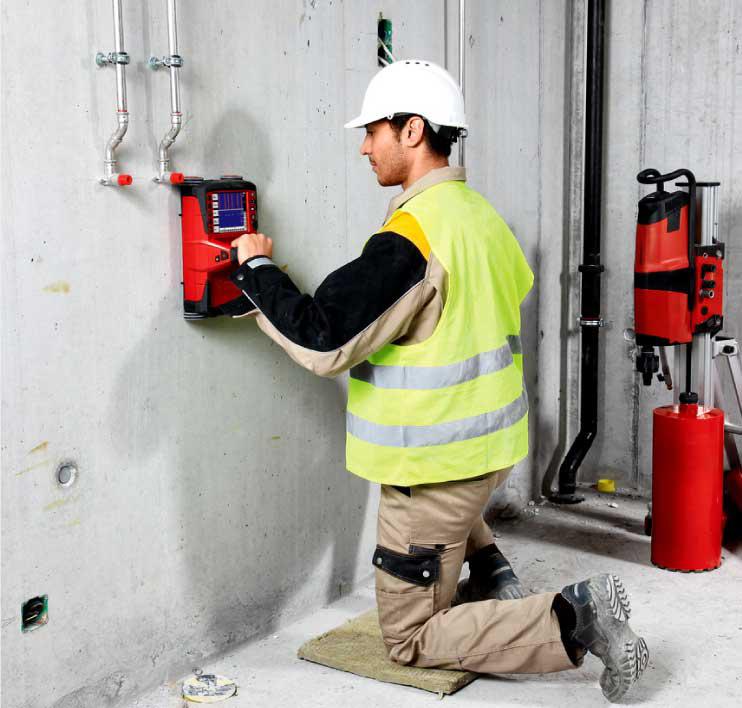Introducing the Power of RainierGPR Concrete Scanning Technology
Introducing the Power of RainierGPR Concrete Scanning Technology
Blog Article
Exploring the Midst: A Comprehensive Guide to Concrete Scanning and Its Diverse Applications
In the world of building and facilities advancement, the precise process of concrete scanning holds a crucial duty in guaranteeing the structural honesty and safety of jobs. As innovation proceeds to develop, the applications of concrete scanning have increased far past plain surface-level analyses. From discovering rebar and post-tension cable televisions to drawing up conduits and voids concealed within concrete structures, the abilities of modern-day scanning methods are both vital and outstanding. The true depth of concrete scanning's prospective reaches also better, branching right into unforeseen markets and sparking ingenious remedies. The interconnected internet of opportunities that concrete scanning offers is not just fascinating however additionally crucial for the innovation of different markets.
Significance of Concrete Scanning
Recognizing the value of concrete scanning is essential in making sure the security and stability of structures during building and construction and renovation projects. Concrete scanning utilizes innovative modern technologies such as ground-penetrating radar (GPR) and electromagnetic induction to spot ingrained things, voids, or various other abnormalities within concrete structures.
Furthermore, concrete scanning plays a critical duty in making certain compliance with structure codes and regulations that mandate the security of existing structural components during building activities. By accurately drawing up the inner structure of concrete, scanning innovations allow building specialists to make enlightened choices that promote the structural stability and durability of buildings and infrastructure projects. In essence, the relevance of concrete scanning hinges on its ability to secure both the architectural stability and the workers entailed in building and construction undertakings.
Technologies Used in Concrete Scanning
Concrete scanning relies on advanced technologies such as ground-penetrating radar (GPR) and electro-magnetic induction to properly identify ingrained items and abnormalities within concrete structures. Ground-penetrating radar runs by sending out high-frequency electro-magnetic waves into the concrete. When these waves encounter various materials or gaps within the concrete, they recover to the surface, permitting the GPR system to produce a detailed subsurface image. This innovation is particularly effective in locating rebar, post-tension cables, conduits, and various other things embedded in concrete.
Electro-magnetic induction, on the various other hand, works by creating magnetic fields around a concrete structure with a transmitter coil. When steel items exist within the concrete, they disrupt these magnetic fields, triggering eddy currents to stream via the steel. By gauging the adjustments in the electromagnetic areas with a receiver coil, the system can determine the location of metal items in the concrete.
These innovative innovations play a crucial role in non-destructive testing, making sure the safety and security and integrity of concrete structures in various sectors.
Applications in Construction Industry
Within the construction industry, concrete scanning modern technology locates varied applications that boost project performance and safety. Furthermore, concrete scanning is utilized for finding spaces, such as air pockets or areas of degeneration within concrete, which can compromise the overall strength of a framework. Concrete scanning plays a vital role in top quality control by verifying the density of concrete covers over support, making certain conformity with layout specifications and standards.

Safety Benefits of Concrete Scanning
In the world of building safety, the application of concrete scanning technology provides a vital benefit in preemptively identifying prospective hazards and fortifying structural stability. By using advanced scanning techniques such as ground-penetrating radar (GPR) and electromagnetic induction, construction groups can accurately find rebar, post-tension wires, conduits, and various other concealed items within concrete frameworks. This positive method considerably decreases the threat of unintentional strikes during boring, reducing, or coring tasks, thereby preventing costly problems, injuries, and job delays.
Furthermore, concrete scanning enhances employee security by giving real-time details about the structural problem of concrete components. This information enables construction experts to assess the integrity of existing frameworks, recognize damage or issues, and make look at this site informed decisions regarding fixing and upkeep treatments. By resolving prospective safety concerns without delay, concrete scanning adds to developing a safe workplace and reducing Read Full Report the chance of architectural failings or accidents on construction websites. Ultimately, the security advantages of concrete scanning not just protect lives and possessions but likewise promote industry requirements for high quality and reliability.
Future Fads in Concrete Scanning
Arising improvements in scanning technology are poised to revolutionize the area of concrete inspection and evaluation. By utilizing the power of AI, these systems can assess large quantities of data collected during scanning procedures to provide more in-depth and accurate insights right into the condition of concrete structures.
An additional significant trend is the development of more user-friendly and mobile scanning gadgets. Miniaturization of scanning equipment permits simpler accessibility to confined spaces and remote locations, making assessments much more efficient and thorough. Furthermore, improvements in cordless interaction modern technologies enable real-time data transfer and evaluation, promoting quicker decision-making processes.
Moreover, there is a growing focus on sustainability in concrete scanning technologies - RainierGPR Concrete Scanning. Manufacturers are significantly incorporating eco-friendly materials and energy-efficient attributes into their devices to reduce ecological effect. These future fads are set to enhance the effectiveness, precision, and sustainability of concrete scanning practices, forming the industry's future landscape
Verdict
Finally, concrete scanning plays a crucial duty in the building sector by guaranteeing the security and performance of different projects. By using advanced innovations, such as GPR and radar imaging, professionals have the ability to properly discover potential threats within concrete structures. The applications of concrete scanning are substantial and proceed to advance, making it a vital device for preserving the integrity of structures and facilities. As innovation advances, the future of concrete scanning holds encouraging growths for boosting building processes.

Report this page